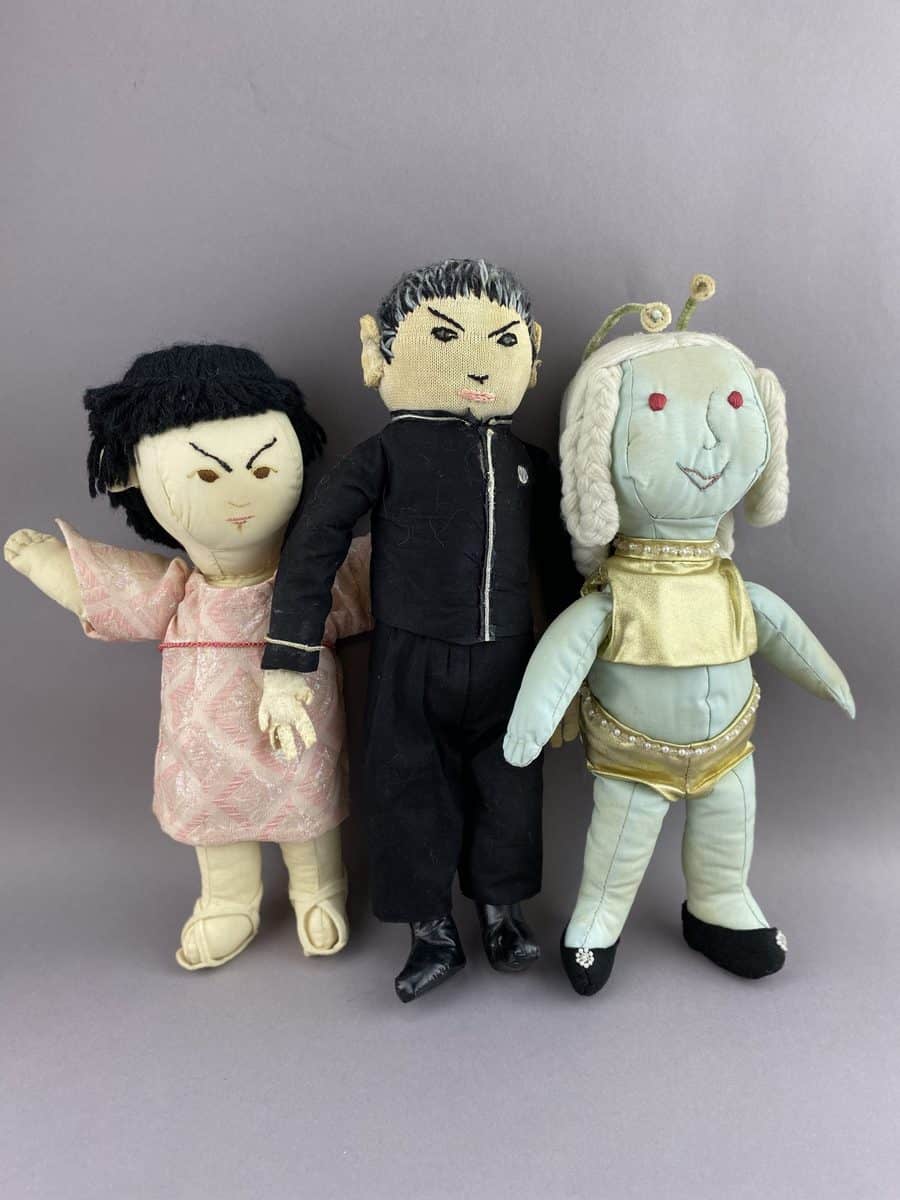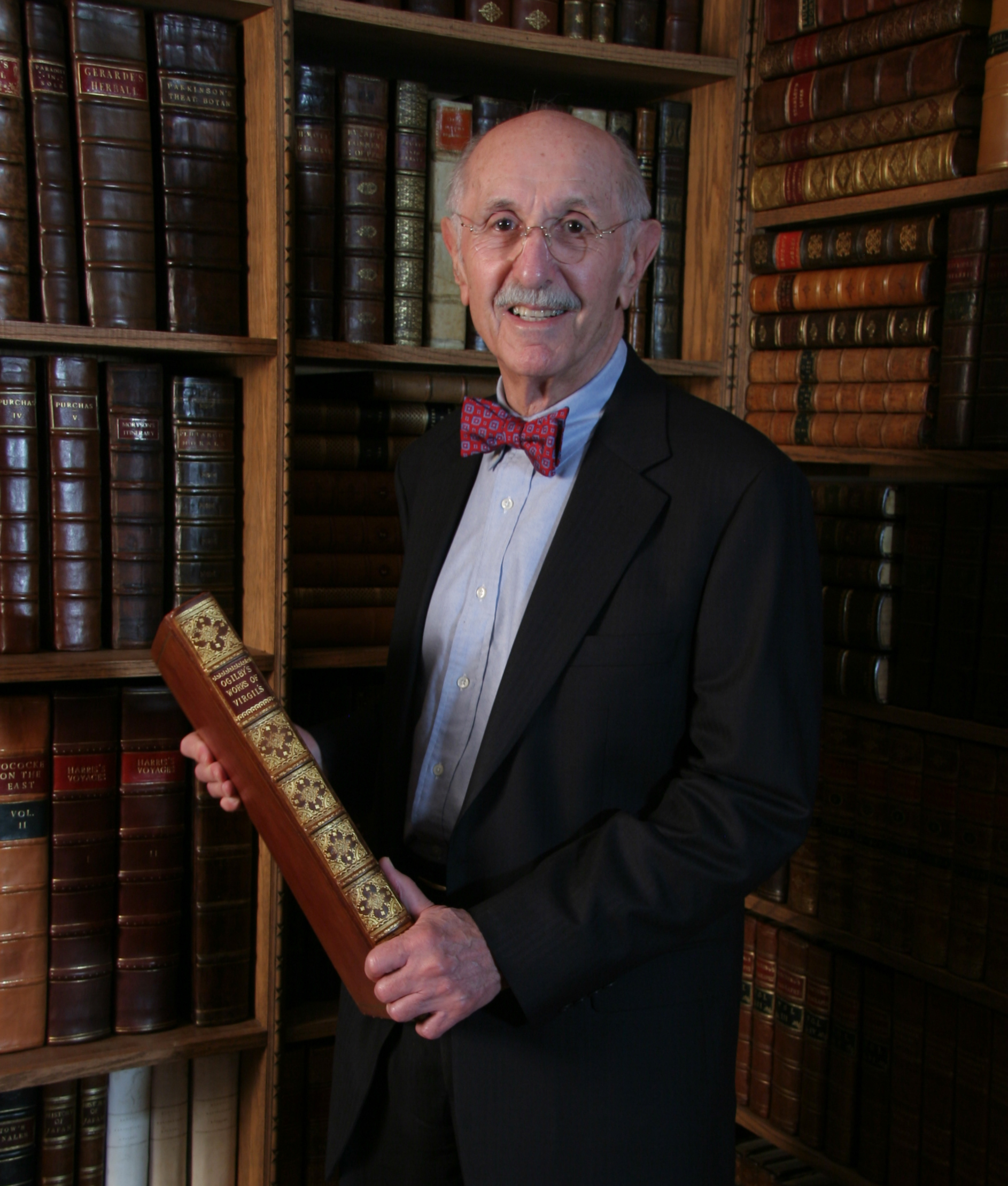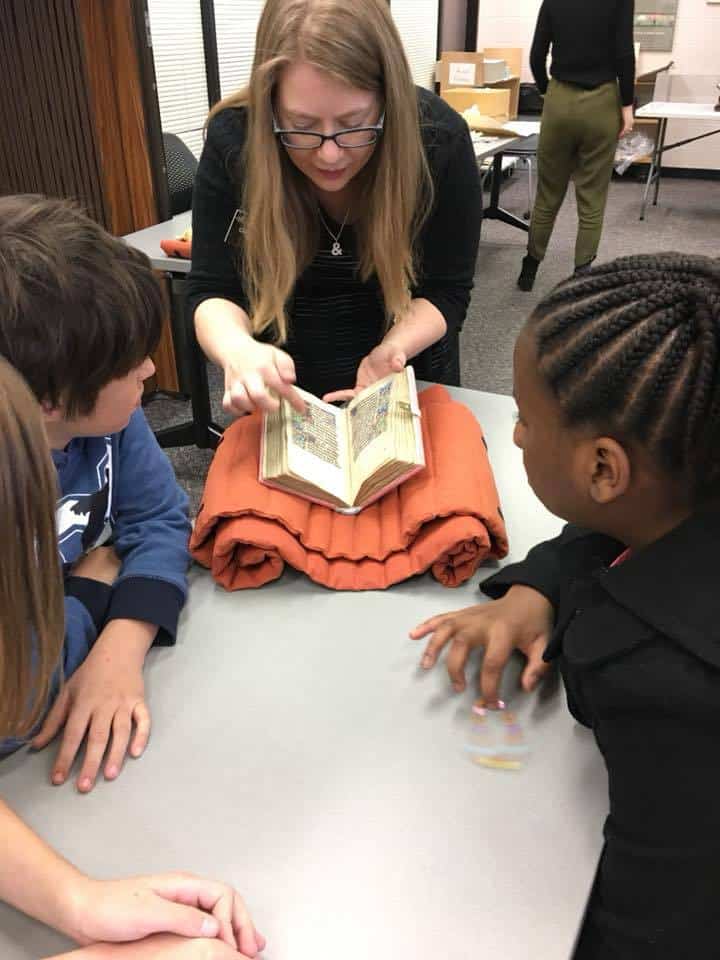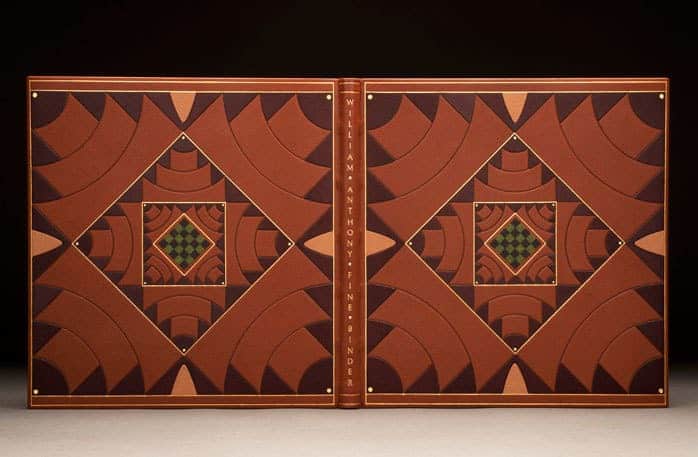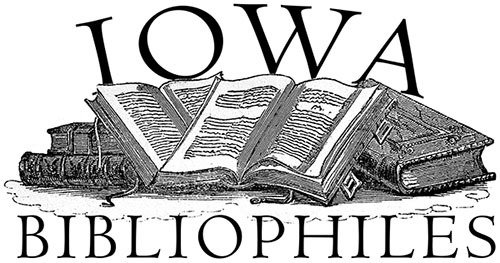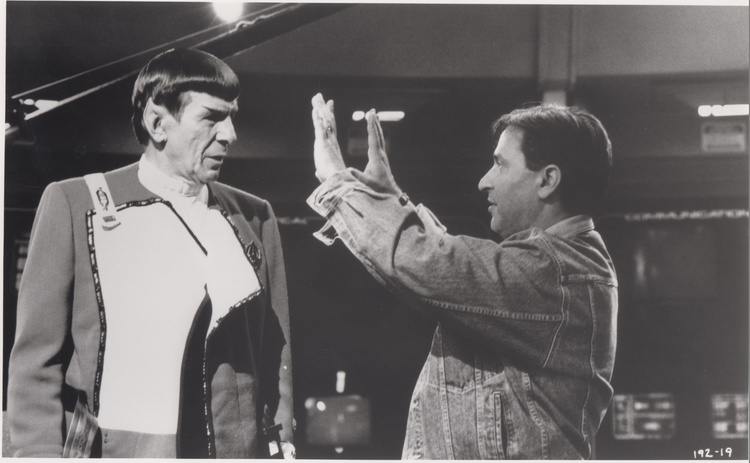Today is April 8th, 2020, the day we were supposed to gather for the last Iowa Bibliophiles of the academic year. The plan: come together, eat some tasty snacks, and explore some of the highlights from our collection with the help of our wonderful student workers. Our students had selected manuscripts, books, and more, researchedContinue reading “A Virtual Bibliophiles”
Tag Archives: Iowa Bibliophiles
Discovering the Rich World of the Encyclopedia
Encyclopedias. If you’re like me, then you haven’t really given them much thought. Growing up in pre-Google days, my family owned a 1988 set that was used and abused by my siblings and I, for both school reports and building forts, and they proved a go-to for school projects and reports in those early yearsContinue reading “Discovering the Rich World of the Encyclopedia”
Special Collections November Recap
Late October and November were filled with big events in Special Collections and the Iowa Women’s Archives. Iowa Bibliophiles 15th Anniversary, 11-8-2017 The November meeting marked the 15th anniversary of the group. In celebration, the evening’s talk was given by Arthur Bonfield, who gave the inaugural Bibliophiles talk in November, 2002. Iowa Women’s Archives 25th Anniversary,Continue reading “Special Collections November Recap”
Upcoming October Events
Handy Books exhibit reception. Friday, October 6th, 12-1pm Special Collections Reading Room Saving Brinton, The documentary was extended at Film Scene in Iowa City and has additional showings through at least October 11th. Read more. Buy tickets. The Reformation and Books – 500 Years Later Wednesday, October 11 at 7:00pm to 8:00pm Raymond Mentzer, DanielContinue reading “Upcoming October Events”
Special Collections Open House – Exhibition Reception and Acquisitions Talk March 8th
Special Collections and the Iowa Bibliophiles will be hosting a reception and open house extravaganza the evening of Wednesday March 8, 2017 celebrating the arrival of the traveling exhibition Open*Set while providing an opportunity for in-depth investigation of our newest acquisitions. Explore the Open*Set exhibition from the American Academy of Bookbinding, in the Special Collections gallery space whileContinue reading “Special Collections Open House – Exhibition Reception and Acquisitions Talk March 8th”
December 14th Iowa Bibliophiles: Arthur Bonfield: 60 years of collecting rare books from 1490-1800
Iowa Bibliophiles December Meeting Arthur Bonfield: 60 years of collecting rare books from 1490-1800 For the last 60 years Professor Arthur Bonfield has collected rare books— original copies of books on several subjects written, published, printed, and bound between 1490 and 1800. In this talk he will discuss the why, how, what, and resultContinue reading “December 14th Iowa Bibliophiles: Arthur Bonfield: 60 years of collecting rare books from 1490-1800”
Special Collections News 11/11/2016
Newsfeed: November “Old Gold” column from University Archivist David McCartney, “What Chicago, UI looked like 108 years ago”: https://now.uiowa.edu/2016/11/old-gold-108-years-ago Featuring UI Libraries staff Rob Shepard: Daily Iowa article: Keeping an Eye on Segregation in the Nation: https://goo.gl/EcmXhI Featuring photo from UI Archives: Iowa Now article: Celebrating points of pride, UI reflects on milestones in creating aContinue reading “Special Collections News 11/11/2016”
Special Collections Weekly Update 5/6/2016
Important Announcements: The Iowa Women’s Archives will be closed May 16-27th for painting. Newsfeed: Talk of Iowa: Brinton Films Make Second Debut in 100 Years at World’s Longest Running Movie Theater featuring Greg Prickman, Head of Special Collections in an interview with Charity Nebbe. Kalona Times: More than a century later, silent film collection again shown inContinue reading “Special Collections Weekly Update 5/6/2016”
Special Collections Weekly Updates 4/29/2016
Newsfeed: Daily Iowan: Star Trek Lands in the Main Library by Bill Cooney Daily Iowan TV: Star Trek Exhibit by Zhao Li CBS Fox 2: Brinton Extravaganza Will Celebrate Silent Film Collection by Steffi Lee. How I Teach by Dr. Adam Hooks, English Department, University of Iowa. ACRL Library Marketing & Outreach Group interview with Outreach & EngagementContinue reading “Special Collections Weekly Updates 4/29/2016”
Special Collections Weekly Update 3/11/2016
Newsfeed: Meet Dorothy Wirtz, by Annie Tunnicliff, Dorothy Wirtz Graduate Research Assistant in the Iowa Women’s Archives http://blog.lib.uiowa.edu/iwa/2016/03/03/meet-dorothy-wirtz/ Public History Partners Follow the Trail of a Dismantled and Lost Medieval Manuscript, by Colleen Theisen https://blog.lib.uiowa.edu/speccoll/2016/03/09/public-history-partners-follow-the-trail-of-a-broken-and-lost-medieval-manuscript/. Upcoming Events: Thursday, 3/24: Jeannette Gabriel, We Did So Much Beyond the Home: Jewish Women and Community Life in Iowa (4 p.m., Iowa Women’sContinue reading “Special Collections Weekly Update 3/11/2016”
